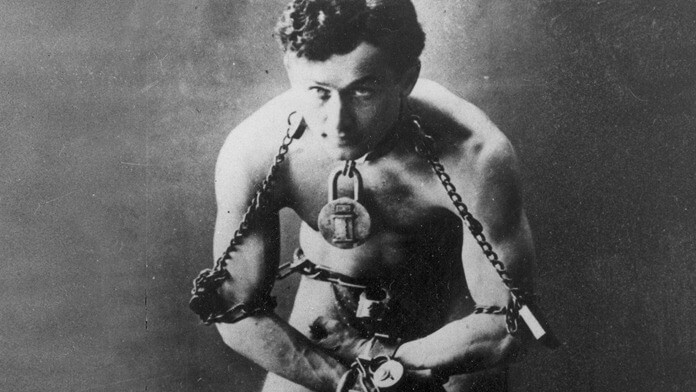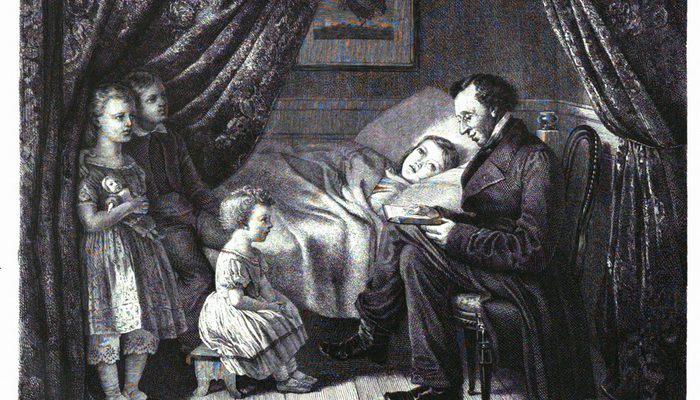У всех нас есть секреты и тайны. Но есть разница между небольшим секретом и огромной тайной, которую вы планируете хранить до последнего дня своей жизни. А ведь многие известные люди именно так и поступили. Вот топ-10 величайших тайн, разгадку которых их авторы забрали с собой в могилу.
10. Бессмертная возлюбленная Бетховена

Известный композитор Людвиг ван Бетховен умер одиноким холостяком в 1827 году, оставив после себя не только множество знаменитых музыкальных произведений, но и романтическую тайну.
Бетховен, как полагают исследователи его биографии, влюблялся несколько раз в течение своей жизни. Но одна неизвестная женщина, которую он назвал своей «Бессмертной возлюбленной», кажется, затмила всех остальных. Страстное любовное письмо к этой загадочной женщине было обнаружено среди бумаг композитора вскоре после его смерти. Оно так и не было отправлено.
Отношения пары, видимо, были сложными, так как Бетховен спрашивает свою возлюбленную: «разве ты не можешь переменить положение, при котором ты не всецело моя и я не всецело твой?»
Есть много теорий о том, кому же посвящено это письмо, но никто еще не нашел точной разгадки. Согласно самой популярной теории наиболее вероятной кандидаткой является Антони Брентано, замужняя женщина, чья семья была близка к Бетховену. Она была близким другом композитора. Он посвятил ей одну из своих работ – «Вариации на тему Диабелли».
9. Секрет Страдивари

Созданные Антонио Страдивари инструменты, в числе которых были не только скрипки, но и гитары и альты, виолончели и даже одна арфа, до сих пор считаются непревзойденными по звучанию. Их звук похож на нежный и высокий женский голос.
Некоторые приписывали это уникальному клею и лаку, секрет изготовления которых Страдивари держал в строжайшем секрете, а также особой древесине, якобы взятой из обломков Ноева ковчега.
Исследователи же уверены, что Страдивари использовал древесину высочайшего качества: ель для деки, клен – для дна скрипки, а чурки разделывались на сектора, чтобы получились «апельсиновые дольки». К тому же у каждой деки был уникальный рисунок отверстий и особый обвод внешних линий.
Но и рецептуру лака и тонкости создания своих певучих творений кремонский гений унес с собой в могилу.
8. Человек-поплавок

Анджело Фатикони, родившийся в 1859 году, не тонул в воде. Он открыл свою «сверхспособность» в раннем детстве, и стал участником многочисленных экспериментов.
Ученые привязывали к телу Анджело тяжелые предметы, но он упорно отказывался тонуть. Однажды он пересек реку Гудзон будучи привязанным к стулу, и держа при этом тяжелый груз.
Анджело Фатикони пообещал раскрыть свою тайну в один прекрасный день, но неожиданно умер в 1931 году, забрав на тот свет секрет удивительной плавучести.
7. Все секреты Гарри Гудини

Легендарный иллюзионист положил конверт с секретами своих величайших трюков в сейф и поручил открыть его через 100 лет после своей смерти.
По его воле, сейф был открыт в присутствии общественности и в нужное время… и оказался пуст. Гудини никогда не объяснял секреты своих удивительных представлений.
6. Тайна Кораллового замка
Эта каменная структура была построена Эдвардом Лидскалнином, эксцентричным скульптором и инженером, который эмигрировал в США из Латвии в начале 20-го века.
«И в чем же тут тайна?», — может спросить читатель. Дело в том, что Лидскалнин построил весь замок в одиночку! Каким-то немыслимым образом он смог двигать и поднимать известняковые мегалиты, весом до 30 тонн. Кроме того, он не использовал раствор — только правильное расположение каждой части держит все сооружение вместе.
При жизни Эдвард утверждал, что знает секрет того, как были построены египетские пирамиды, но никогда не делился разгадкой этого секрета. Спустя много лет после его смерти, один из элементов замка был разбит, и инженерам пришлось использовать строительный кран, чтобы переместить его.
5. Человек, взломавший «неуязвимый» немецкий код

В 1940 году шведы подключились к немецким линиям связи, проходящим через страну по пути в Норвегию, и смогли взломать код одного из самых совершенных криптологических устройств того времени. Оно называлось T52, или «Geheimschreiber». Это устройство было больше и сложнее, чем знаменитая Enigma, и передавало только важные и секретные сообщения.
Сначала шведы были сбиты с толку данными, исходящими от T52, и назвали их «крайне нечитаемыми». Именно тогда в игру вступил Арне Берлинг, профессор математики. Всего через две недели он смог взломать шифр T52. Как он это сделал, остается неясным. Когда Берлинга спросили об этом, он ответил: «Маг не раскрывает своих секретов». Спустя 46 лет он скончался, оставив свою загадку неразгаданной.

Благодаря сообразительности и изобретательности Арне Берлинга шведы смогли заранее узнать планы Гитлера по вторжению в Россию.
4. Морис Уорд и его рецепт неразрушимого пластика
Английский изобретатель по имени Морис Уорд создал термостойкий пластик, который мог выдержать температуру свыше 10 000 градусов по Цельсию и был устойчив к ударной силе, большей, чем у бомбы, сброшенной на Хиросиму.
Когда Мориса спросили, как же он сумел создать подобное чудо, он ответил, что этот пластик сделан из «21 органического полимера, сополимера и небольшого количества керамики». Однако этих слов было явно недостаточно для того, чтобы ученые повторили формулу пластика.
Назвав свое детище Starlite, Уорд решил продать его тем, кто мог быть в нем заинтересован. Однако затем он испугался, что компания, купившая Starlite, может начать получать прибыль от его изобретения, не выплатив самому Уорду никакого вознаграждения.
В 2011 году Морис Уорд скончался, унеся с собой секрет Starlite.
3. Никола Тесла и беспроводное электричество
Никола Тесла был тем человеком, который обнаружил, что переменный ток гораздо более практичен и безопасен, чем постоянный ток Эдисона. Ему также приписывают изобретение катушки Теслы, радиопередатчика и флуоресцентных ламп, а к началу 1900-х годов его считали величайшим инженером-электриком Америки.
Но, несмотря на все свои достоинства, Тесла не смог завершить то, что было бы его главным достижением – предоставить бесплатное беспроводное электричество всему миру. Реализации столь амбициозного проекта, шедшего с 1901 по 1917 годы, помешал финансовый вопрос. Главный инвестор Дж. П. Морган решил отказаться от дальнейшего спонсирования Теслы. А патенты самого изобретателя истекли в 1905 году и больше не приносили ему столько денег, чтобы хватало на постройку башни.
Когда Тесла умер в 1943 году, вместе с ним исчез и секрет беспроводного электричества – полезного изобретения, которому не дали хода.
2. Библиотека Ивана Грозного

Ищут пожарные, ищет милиция… Кто только не искал знаменитую библиотеку Ивана Грозного, которая содержала огромное количество латинских, египетских и греческих книг и рукописей. Некогда она принадлежала византийским императорам, и попала в Россию в качестве приданого царевны Софьи Палеолог, вышедшей замуж за Ивана III.
Иван Грозный (Иван IV) был последним царем, владеющим библиотекой. Он очень гордился знаменитой коллекцией и принял меры, чтобы сохранить ее местонахождение в тайне. После его смерти информация о местонахождении библиотеки была потеряна.
Некоторые исследователи считают, что ее не существовало вовсе, либо же она была утрачена во времена Смуты. И насчитывается аж 60 версий о местонахождении библиотеки Ивана Грозного, если она все же уцелела.
1. Главный вопрос жизни и Вселенной
Нашу подборку возглавляет тайна, ответ на которую был дан, но, возможно лишь для того, чтобы еще сильнее раззадорить фанатов.
В своем знаменитом «Путеводителе для путешествующих автостопом по галактике» Дуглас Адамс дает невероятно простой и смешной ответ на вопрос, который мог бы решить все проблемы Вселенной. По мнению автора, ответ — 42.
Никто не знает, почему Адамс выбрал этот номер, но истинные поклонники трилогии потратили годы, пытаясь углубиться в разгадку. Была ли это просто шутка? Использовал ли Адамс случайное число? Или в нем есть какой-либо скрытый смысл?

«Ответ на это очень прост. Это была шутка. Это должно было быть число — обычное, небольшое число — и я выбрал это. Двоичное представление, тринадцатеричная система счисления, тибетские монахи — всё это полнейшая бессмыслица. Я сидел за своим столом, уставившись в сад, и подумал: «42 подойдёт». И напечатал его. Вот и вся история», — однажды заявил Адамс в своей USENET-конференции. Но как теперь узнать, не слукавил ли он?
📚 Не пропустите интересную информацию:
-
Объяснение финала «Вора наркотиков»: в чем был секрет Сона?
Комедийная криминальная драма Apple TV «Вор наркотиков » зацепила нас с самого начала. Комическое исполнение Брайаном Тайри Генри роли Рэя и товарищество, которое он разделяет... -
Самая богатая деревня в мире: в чем секрет деревни Хуаси в Китае, где все — миллионеры?
Представьте себе деревню, все жители которой — миллионеры! Быть миллионером — это не просто городской миф, это часть повседневной жизни в деревне Хуаси в китайской... -
Мы приоткрываем завесу тайны! Что на самом деле означают загадочные числа в сериале «Остаться в живых»?
Один из самых заметных сериалов в истории телевидения, «Остаться в живых» произвел огромное впечатление своими ошеломляющими тайнами и захватывающим сюжетом после первой трансляции. Сериал, с... -
14 серий, полных тайн и саспенса, которые любители мрачного контента посмотрят на одном дыхании
Созданный Бараном бо Одаром и Янтье Фризе немецкий сериал Netflix «Тьма» сумел создать у своих зрителей большую загадку и с каждым сезоном добавляет все больше... -
12 поразительных фактов о совах: Тайны ночных хищников
Птицы — одни из самых любимых созданий многих людей. Многие виды этих существ, часто ассоциирующиеся со свободой и миром, живут бок о бок с людьми...







